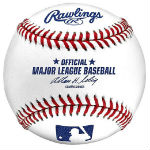 We all have a few new rules and regulations to deal with this year in Major League Baseball. One of the most controversial is the rule(s) about home plate collisions and how to avoid them.
We all have a few new rules and regulations to deal with this year in Major League Baseball. One of the most controversial is the rule(s) about home plate collisions and how to avoid them.
Actually, the rules haven’t changed that much, but there is a difference. Last week, Yankee’s backup catcher, Francisco Cervelli, was making for home only to find his way blocked by the Blue Jay’s catcher, Josh Thole. Wait a minute, isn’t there a new rule against that?
Actually, no. Josh Thole was in the right because he already had the ball in his glove when he entered the baseline, blocking Cervelli. The Yankees protested, but lost both the protest and the game.
So the new ruling is not supposed to ban home plate collisions after all. It is simply an attempt to ban the unnecessary ones trying to cut down on pointless injuries to both catchers and runners from this historically violent confrontation.
The new rule does indeed state that the catcher cannot block the pathway of the runner who is attempting to score, unless he is in possession of the baseball. Should the catcher block the runner and not have the ball, a judgment call by the umpires then the Umps will signal the runner safe.
Clear enough? But wait, it gets better still. Under rule 7.13, it will not be considered a violation if the catcher blocks the pathway of the base runner in order to field a throw coming his way. Once again this will be a judgment call which is left up to the umpires to decide. Notice that we are using the words ‘judgment call’ quite a bit. Some might begin to wonder just how complicated this is going to turn out as the season goes along.
The home plate umpire can rule that the catcher could not have fielded the incoming ball without blocking the runner’s path and still call the runner out assuming of course that the catcher could hold onto the ball during the collision.
Yankees manager Joe Girardi commented after the game with Toronto, “This is going to be the toughest replay of all of them because it’s such a judgment. The way it was explained to us, if the catcher is in front of home plate toward third base, straddling the base, that is considered blocking home plate if you don’t have the ball. And I believe that’s how it was.”
If it’s got Girardi confused, no wonder the fans are left wondering. Let’s hope that the catchers will figure it out pretty soon. Play Ball!




